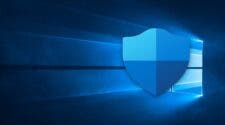If your computer desktop is cluttered and you’ve noticed a decline in performance, it’s a clear sign that your system needs a cleanup. Regular maintenance can significantly enhance speed, storage space, and overall functionality. Fortunately, Windows comes equipped with built-in tools that can help streamline and optimize your system without the need for third-party software.
The first and most crucial step in maintaining a well-functioning PC is ensuring you have the latest Windows updates installed. Many users unknowingly lag behind in updates, which can cause system inefficiencies and security vulnerabilities. But once your system is up to date, there are several other ways to enhance its performance. In this guide, we will explore Windows’ built-in cleanup utilities and methods for optimizing your system to keep it running at peak performance.
Optimize Your Windows PC: A Complete Guide to Cleaning Up and Boosting Performance

Windows includes a variety of utilities designed to remove unnecessary files and free up valuable storage space. These tools might not perform large-scale repairs, but they can significantly enhance system responsiveness by eliminating excess digital clutter.
Why Cleaning Your PC Matters
Over time, everyday computer use leads to the accumulation of cache files, temporary internet files, and outdated system logs. These files, if left unchecked, can lead to slower boot times, laggy performance, and erratic system behavior. Cleaning up your PC periodically helps maintain its efficiency and prevents slowdowns caused by unnecessary data buildup.
Using Windows Cleanup Recommendations
Windows 11 offers a feature called “Cleanup Recommendations,” which identifies large files, unused applications, and system files that can be safely deleted. Here’s how to access it:
- Click the Start button and open Settings.
- Navigate to System, then select Storage.
- Scroll down and click on Cleanup Recommendations.
This feature highlights temporary files in your Downloads folder and Recycle Bin that you can remove to reclaim storage space. Before deleting anything, double-check your Downloads folder to ensure you don’t erase important files by mistake.
Other recommendations may include large and rarely used files. These are often video clips, large image files, or documents that you may no longer need. Windows will suggest their removal, allowing you to review and delete them accordingly.
Additionally, Windows identifies applications that you rarely or never use. If you no longer need these apps, removing them can free up considerable disk space. Simply uninstalling redundant software can enhance both storage and system performance.
How to Use the Windows Disk Cleanup Utility
Another powerful tool available on all versions of Windows is Disk Cleanup. This utility is simple to access and use. Follow these steps to run it:
- Open the Start menu and type Disk Cleanup in the search bar.
- Select the tool from the search results to open it.
- The utility will analyze your system and identify unnecessary files such as:
- Temporary internet files
- Setup log files
- Various system cache files
- Check the boxes next to the file types you wish to delete and click OK to proceed.
This method can quickly recover a few gigabytes of disk space and improve overall system speed. Every bit of recovered storage adds up, helping your PC function more efficiently.
Clearing Your PC’s Location Cache
When your computer connects to different networks, it stores location-related data. Over time, this information can accumulate and slow down certain location-based services. Fortunately, clearing your location cache is a simple process:
- Open the Start menu and navigate to Settings.
- Click on Privacy & Security.
- Scroll down to Location History and click Clear.
This action removes all stored location-related data, ensuring that your system isn’t burdened by unnecessary cache files.
Flushing the DNS Cache to Improve Internet Speed
If you’ve noticed that your internet browsing speed has decreased, your DNS cache may be the culprit. A DNS cache stores web address information to help websites load faster, but over time, outdated or corrupted entries can slow down your internet connection. Flushing the DNS cache can help resolve this issue:
- Press Windows key + R to open the Run command window.
- Type the following command and press Enter: ipconfig /flushdns
This process clears the DNS cache, potentially improving your browsing speed by forcing your system to fetch updated web address information from DNS servers.
Additional Tips for Maintaining a Clean and Optimized Windows PC
While Windows provides essential tools for system maintenance, developing good file management habits can further optimize performance. Consider these additional tips:
- Regularly Empty the Recycle Bin: Deleted files remain in the Recycle Bin until manually emptied, occupying unnecessary space.
- Organize Your Files: Avoid storing too many large files on your desktop. Instead, move them to dedicated folders.
- Uninstall Bloatware and Unused Apps: Many new PCs come with pre-installed software that you may never use. Removing such applications can free up storage and system resources.
- Use External Storage for Large Files: If you work with large files (such as videos or high-resolution images), consider using an external hard drive or cloud storage to keep your internal drive less cluttered.
- Run a Malware Scan: Periodically scanning your PC for malware can help ensure that performance issues aren’t caused by malicious software.
Conclusion
Optimizing your Windows PC is easier than you might think. With built-in utilities like Cleanup Recommendations, Disk Cleanup, and DNS cache flushing, you can quickly free up storage space, enhance system speed, and ensure a smooth user experience. Implementing these maintenance habits and monitoring file creep will keep your computer running efficiently for the long haul.
By taking the time to perform these simple yet effective optimizations, you’ll improve your system’s performance and longevity, making your computing experience seamless and frustration-free. Start cleaning up today and enjoy a faster, more efficient Windows PC!





